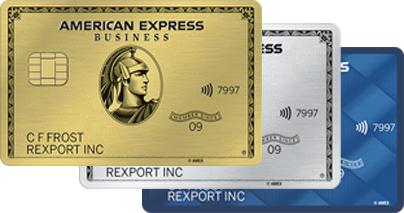
How Employee Credit Cards Work
By Frances Coppola | American Express® Freelance Contributor
6 Min Read | March 25, 2021
Summary
Employee credit cards enable employee spending on behalf of a business while giving business owners and managers better insight into that spending and better control over it – potentially without the hassle and cost of expense claims and reimbursement.

Characteristics of Employee Credit Cards
Employee credit cards are authorized user cards that your employees can use for business-related spending. Each card is issued to a named employee and is tied to the business’ credit card account or prepaid business card account. The business can request employee cards from the card issuer, usually free of charge. Most issuers allow you to have as many employee cards as you want.
Employee credit cards have the same terms and conditions as the business credit card to which they are tied. Typically, there is an interest-free period of approximately a month during which the card’s statement balance can be paid in full, though it can be longer depending on the business card terms. Interest at the business card’s annual percentage rate (APR) will be charged on any balance outstanding after the end of the interest-free period.
Like most credit cards, employee credit cards are considered “revolving credit.” This means that when the balance on the card is paid down, the employee can spend again up to the credit limit on the card. To help control business spending by employees, a business can set individual credit limits for employee cards as a group, and some issuers allow individual per-user limits. These limits can be much lower than the main business card credit limit but can’t be higher.
Employees’ collective spending can’t exceed the credit limit on the main business credit card account. If you have a lot of employee cards – say over 100 – some issuers advise you to tie them to a corporate card that has no pre-set spending limit rather than a business credit card. This can make it easier to manage large numbers of employee cards, but the balance usually must be paid off in full at the end of every month.
There are two ways of paying employee credit card balances: either the business pays them directly – avoiding the administration overhead of a reimbursement process – or the employee pays the credit card balance and claims back the expense. Most card issuers allow you to choose which approach works better for your business.
If a business ties employee credit cards to a prepaid business card account, then there is no interest rate on the cards and no balances to clear at the end of the month. Employee spending gradually reduces the balance on the main card.
Whether a business ties its employee cards to a business credit card, a corporate card, or a prepaid card, the card issuer usually provides tools to help monitor and manage employee spending and streamline expense claims and accounting.
Ways Employee Credit Cards Streamline Expense Management
There are several ways employee credit cards help small business managers better monitor and control employee spending:
- Typical online tools or phone apps provided by card issuers give business managers an instant overview of the employee credit card purchases being made and who is making them. So, managers can intervene quickly if something violates company policy or is otherwise problematic.
- Managers can also match phone images of receipts taken by employees with business card transaction records and organize employees’ purchases into expense categories ready for tax returns.
- Owners and finance managers can use the business’ central record of employee credit card transactions to inform budget planning.
- Some card issuers allow business owners to designate an employee – perhaps someone in the finance department – as the account manager for the business card. That individual can then supervise expenditures of all other employees, including issuing cards to new employees, setting credit limits and alerts, and authorizing large purchases.
Using employee credit cards can also help protect against fraud, since card issuers typically monitor transactions for signs of fraud and will notify you if anything looks wrong.
How Employee Credit Card Spending Can Save Money
Employee credit cards usually have the same rewards and benefits as the business credit cards to which they are tied. Typical rewards might be:
- 5% cashback on certain types of purchases, e.g. office equipment and gasoline.
- Rewards points on certain types of purchases, e.g. air fares and hotel stays.
- Rewards "in kind,” such as access to airport lounges or free travel insurance.
Rewards in kind obviously go only to the employee holding the card, but reward points and cash back are usually credited to the main business card account. So businesses can benefit from the cash back or rewards points that employee spending builds up, using them to buy new equipment and cover other business expenses.
Rewards and cash back can also be used to motivate employees. For example, you might use rewards points to send high-performing employees and their families on well-earned short breaks, or take your whole team on a night out at the theatre. Prepaid cards don’t usually have rewards or cash back programs.

The Card your business deserves
From travel benefits to cash flow management, we've got a Card for you.






